When you have mud daubers around your home, or you just run across them in the wild, there’s always a chance that you can get stung. They’re a unique and peculiar breed of wasp that’s different from its many cousins. When you get stung by a mud dauber, how do you treat it?
How to treat mud dauber stings? Mud dauber stings are relatively harmless unless you happen to be allergic. Treatment should consist of a thorough cleaning with soap and water, then applying an ice or cold pack to reduce swelling and pain. Allergic reactions can be deadly and will require immediate medical attention.
This article will discuss basic information about mud daubers, including where they live, what they eat, and other relevant information about their stings.
What Is a Mud Dauber?
Mud daubers are a family of wasps that look similar to the dreaded yellow jacket, though they couldn’t be more different. They have several unique characteristics that you can use to tell them apart from other wasps.
What Does a Mud Dauber Look Like?
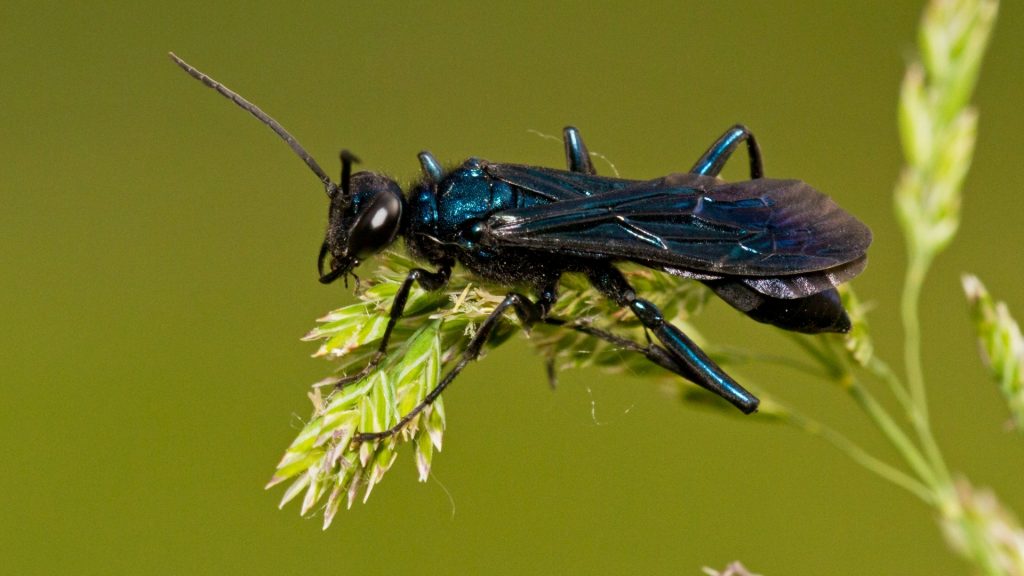
Yellow mud daubers range from all-black to yellow and black, making them similar to yellow jacket wasps. Meanwhile, the other major type of mud dauber is the blue variety.
Yellow jackets’ coloring is striking yellow-black stripes. Mud daubers are usually solitary creatures not accompanied by others – by contrast, yellow jackets are gregarious and social bugs.
On the other hand, the blue variety is typically metallic or iridescent blue all over, appearing as if it has been painted with gunmetal blue paint.
Related: Yellow Jacket Control: How To Get Rid of Yellow Jackets?
Mud Dauber Life Cycle
Mud daubers have four life stages: egg, larva, pupa, and adult. Mature females construct nests out of mud, which dries around the prey that they place into the cells.
These female mud daubers will place eggs on the prey in the spring, and they hatch in the fall. Then, the prey ensures the larvae have ample food to grow over the fall and winter.
During the following spring, mud daubers will reach maturity and leave the nest to mate and construct their nests after hatching.
According to the Texas Apiary Inspection Service, mud daubers are solitary. This means that there’s usually only one adult per nest that constructs a nest, stocks it with prey, and lays eggs on paralyzed prey.
Females don’t linger after they’ve laid eggs and stocked a nest with prey, preferring to move on and construct new nests.
Types of Mud Daubers
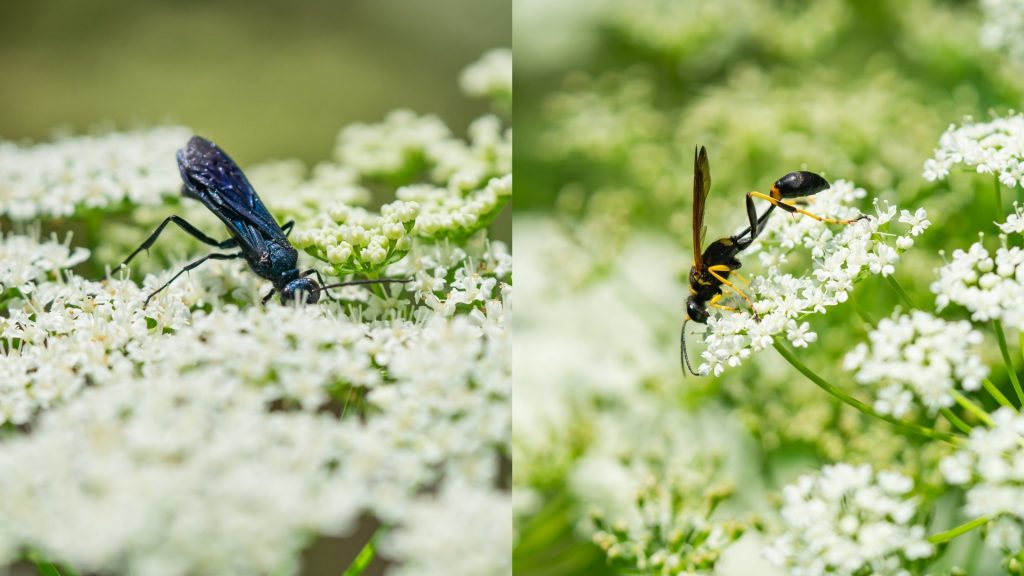
There are two main types of mud dauber wasps: blue mud daubers and black and yellow mud daubers. Other minor types of mud daubers exist, such as the organ pipe mud dauber, although they aren’t seen as much.
The two mud dauber types mainly differ in their diet and nest shapes – blue daubers build more complex nests with multiple cells, while yellow daubers make simple ‘dirt’ nests of only one cell. Blue mud daubers are notable for occasionally refurbishing and reusing existing mud dauber nests of any type.
Related: What Do Wasps Eat? | Information & Facts
What Do Mud Daubers Eat?
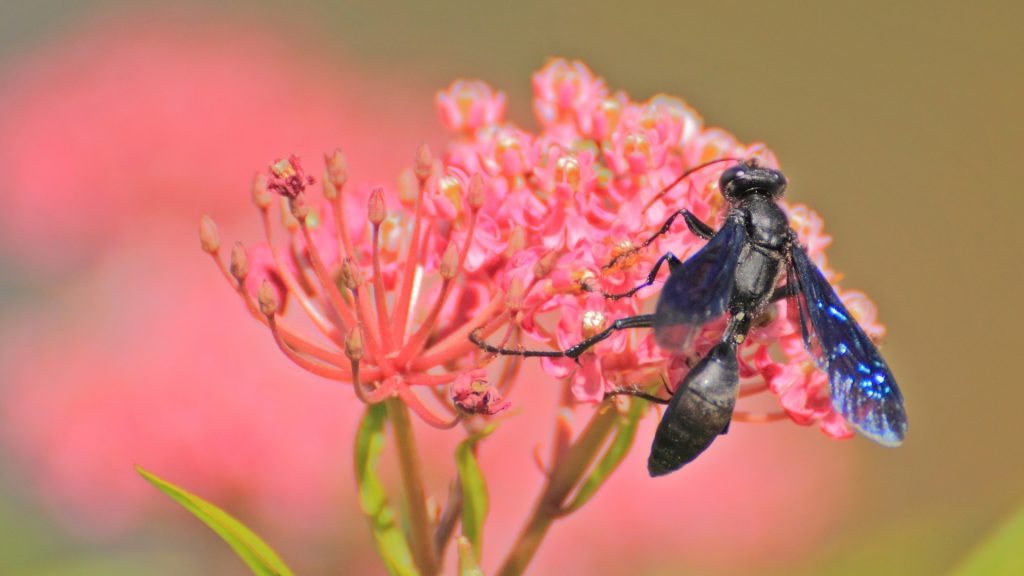
According to the Missouri Department of Conservation, mud daubers primarily feed on spiders, with the exact type depending on the species. Black and yellow mud daubers prefer small and colorful spiders like crab spiders and orb weavers.
Blue mud daubers are the primary predator of the deadly black widow spiders, making them very beneficial to areas they live.
Mud daubers will sting prey and paralyze it, making it easy to transport. The prey is placed in mud nest cells, where females will place eggs onto the prey and seal the cell with mud.
Venom also acts as a preservative, keeping the prey fresh for when larvae hatch. Mud daubers usually prefer smaller spiders so they can fit more into a single nest.
Adult mud daubers also frequently drink nectar from flowers, making them a beneficial pollinator akin to bees.
Mud Dauber Sting
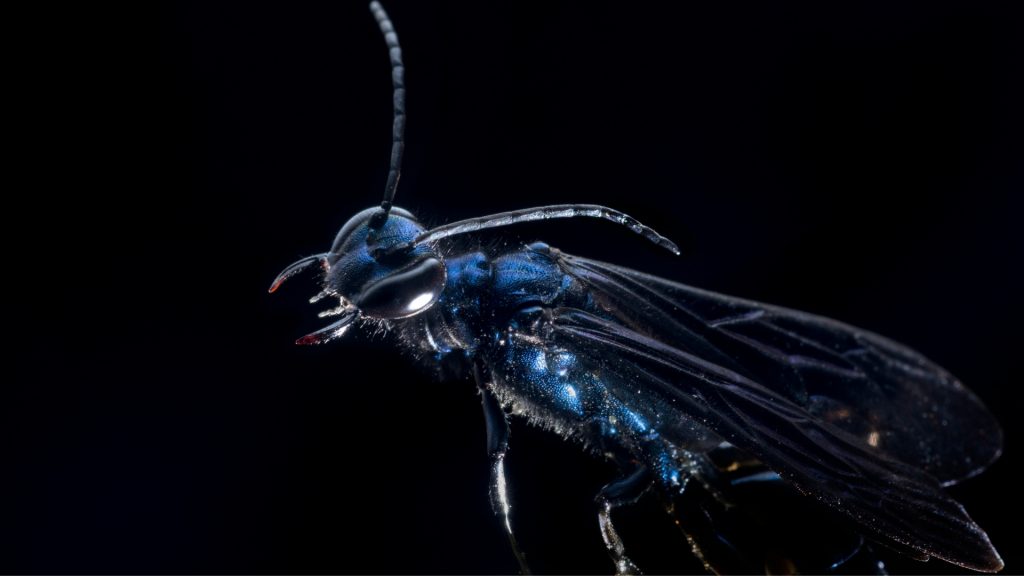
It can be alarming and painful to be stung by any wasp, but the good news is that mud dauber wasps don’t have toxic venom. You should only worry if you’re allergic to their venom, which you may only learn if you’re stung.
Do Mud Dauber Wasps Sting?
Like most wasps, mud dauber wasps can sting people but typically only when threatened, provoked, or cornered. Mud daubers are solitary creatures, unlike the gregarious yellow jacket wasps, and will avoid people if possible.
However, when they set up residence in your home, avoiding them may not be an option. If mud daubers make a nest close to your front door, for example, you could run into one coming in or out and get stung by accident.
What Does a Mud Dauber Sting Look Like?
A mud dauber sting looks like any other sting: the immediate area will become red and swell, becoming a singular welt near the sting. If the sting appears to spread, that may be a sign of an allergic reaction, necessitating medical attention.
Do Mud Dauber Stings Hurt?
Any wasp sting will hurt, probably swelling and becoming tender for some time. Justin Schmidt, a National Geographic biologist, ranked the pain level of the mud dauber on a scale alongside other insect bites and stings. It got a mere 1 out of 4, so it’s not that bad. The warrior wasp, by contrast, is 4 on the same scale.
An allergic reaction might happen if a mud dauber sting stings a lot, especially if it swells excessively. You should immediately see a doctor if this happens, as it may be fatal.
Are Mud Dauber Stings Dangerous?
Mud dauber stings aren’t a cause of concern unless you’re allergic to them. It will usually recover and clear up in a few days. However, if someone has been stung several times, it may take longer.
Mud Dauber Sting Allergy
A person stung by a mud dauber wasp may exhibit peculiar and severe symptoms on very rare occasions. These symptoms indicate an allergy to mud dauber venom, and that person would require immediate medical assistance.
Here are the signs of mud dauber venom allergies:
- Extreme swelling around the site of the sting
- Intense itching and burning that spreads from the bite to other parts of the body
- Welts rising on other parts of the body
- Difficult breathing, which is a sign of the airway closing from swelling
These signs are symptoms of a condition called anaphylactic shock, which can be deadly if the person doesn’t get medical attention right away. Persons with known allergies may use epinephrine, or an EpiPen, to treat such allergic reactions.
Mud Dauber Sting Treatment
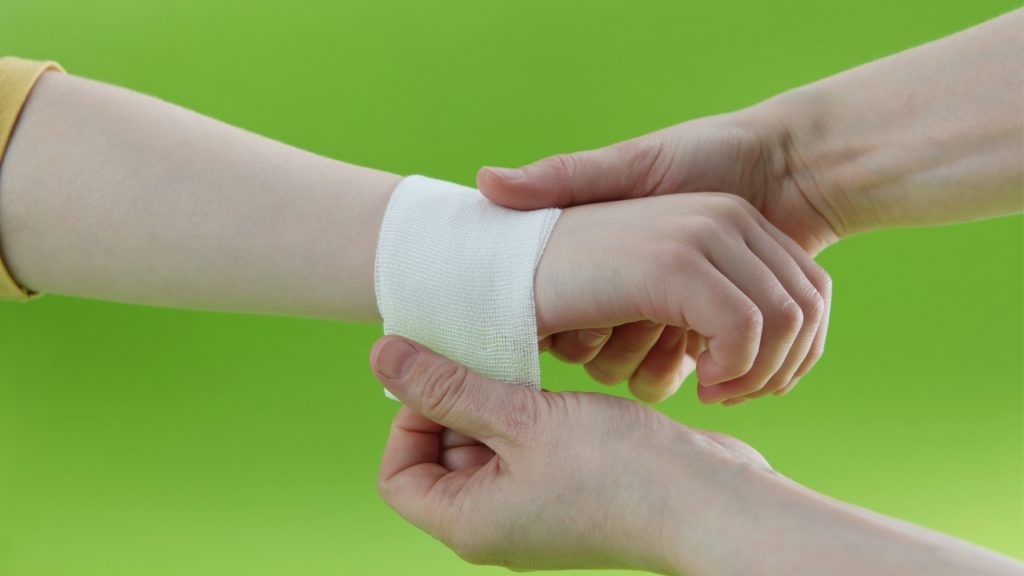
Mud dauber stings are usually pretty mild and don’t need special attention. In cases where the person isn’t allergic to mud dauber stings, treatment is relatively easy and consists of basic cleaning and bandaging.
How to Treat a Mud Dauber Sting?
Treating a mud dauber sting can be done easily at home as long as you’re not allergic. All you have to do is follow some basic steps.
Step 1: Wash the sting and the surrounding area to ensure that any excess venom is safely removed.
Step 2: Pat dry with paper towels. Rubbing may exacerbate pain.
Step 3: Apply an ice pack or cold pack to reduce swelling.
Step 4: If you wish to cover the sting, you can put a bandaid or bandage over it. Don’t keep it covered for extended periods, however.
Step 5: If you want extra protection against infection, you can also apply an antibacterial gel once daily. This isn’t necessary, though.
How Do You Get Rid of Mud Dauber Wasps?
Getting rid of mud dauber wasps can be approached from several angles. You can caulk and seal your home’s crevices in the walls and foundations to discourage mud dauber prey, spiders from lurking around.
Less food for them will make the area less attractive for the wasps, according to Clemson University.
They’re usually left unattended after construction and egg laying as far as getting rid of the mud dauber nests. As long as there aren’t adults in or around the nest, you can manually remove nests with a metal scraper.
Thoroughly removing all the nests in an area will discourage mud daubers from reinhabiting the area, and they’ll be more likely to move on to a more suitable environment.
If you wish to remove a mud dauber nest but suspect wasps are still inside, you can use a wasp freeze or other pesticides sprays to kill the bugs before removing the nest.
Summary
Mud dauber wasps are annoying like any other wasp, but they’re generally beneficial and don’t sting. In cases a sting does happen, clean it with soap and water and apply an ice pack. If it swells or hives occur, the person may be allergic and should be brought to an ER or doctor.
List of Sources
Smith, P. (2008). Mud Daubers. Clemson University.
Gibb, T. J. (2018). Mud Daubers. Purdue University.
- How to Get Rid of Copperheads | Practical Guide - August 27, 2023
- How to Get Rid of Corn Snakes | What Makes Them Aggressive? - August 27, 2023
- How to Get Rid of Alligators | Safety Measures and Removal Methods - July 16, 2023
